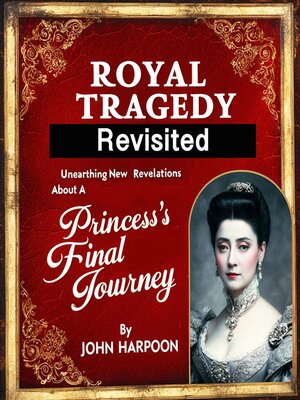Royal Tragedy Revisited
audiobook (Unabridged) ∣ Unearthing New Revelations about a Princess's Final Journey
By John Harpoon

Sign up to save your library
With an OverDrive account, you can save your favorite libraries for at-a-glance information about availability. Find out more about OverDrive accounts.
Find this title in Libby, the library reading app by OverDrive.



Search for a digital library with this title
Title found at these libraries:
| Library Name | Distance |
|---|---|
| Loading... |
The princess's life was often depicted as the epitome of grace, beauty, and elegance—a life that many admired and envied. However, this public image was a carefully constructed facade, a persona meticulously curated by the royal family, the media, and society at large. On the surface, she was the picture of royal perfection, embodying the ideals of a fairytale life. Her beauty was celebrated, her marriage deemed a fairy tale, and her charitable works held up as the epitome of selflessness. She was portrayed as the perfect princess, a symbol of hope and positivity.
Yet beneath this seemingly flawless exterior, there was much more than met the eye. The princess's early life was not as picture-perfect as many would have liked to believe. Raised within the confines of an institution that placed duty above all else, she was groomed to be a public figure from a young age. However, the pressure to maintain a flawless image often conflicted with her own personal desires and struggles. Growing up under the weight of royal expectations, she was never truly allowed the freedom to be herself. Her every move was scrutinized, and her decisions often made with the fear of disappointing those around her.
As she entered adulthood, the weight of public adoration and media attention only intensified. The princess was constantly under the microscope, her life a matter of public interest. Every wardrobe choice, every relationship, and every gesture was analyzed and dissected by the media. Her image became a commodity, one that was shaped not just by herself, but by those who profited from her persona. She became a symbol not just of royalty, but of the ideal woman—a figure to be admired, imitated, and adored.







